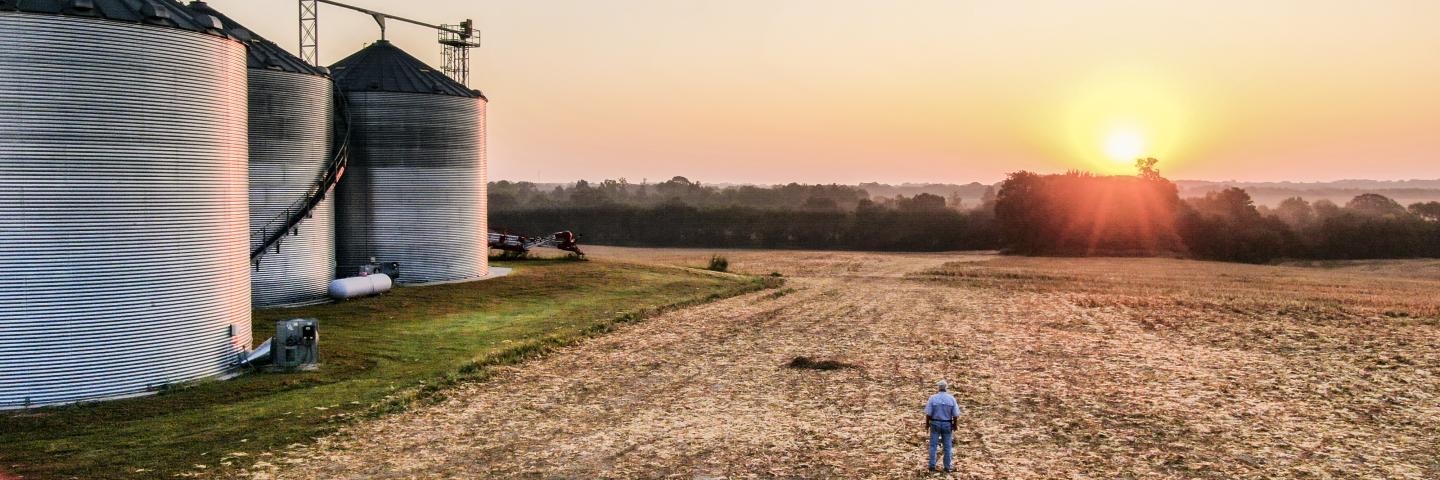USDA Invests More Than $166.5 Million in Infrastructure to Protect American Communities

President Joe Biden and Agriculture Secretary Tom Vilsack announced that the U.S. Department of Agriculture (USDA) is investing more than $166.5 million in 108 infrastructure projects as part of implementing the Bipartisan Infrastructure Law.
BOISE, ID, March 3, 2022 –President Joe Biden and Agriculture Secretary Tom Vilsack announced that the U.S. Department of Agriculture (USDA) is investing more than $166.5 million in 108 infrastructure projects as part of implementing the Bipartisan Infrastructure Law, also known as the Infrastructure Investment and Jobs Act (IIJA). USDA’s Natural Resources Conservation Service (NRCS) is working with local communities in 23 states to invest in new dam and flood prevention projects, irrigation infrastructure modernization, and in repairs on existing watershed infrastructure, which are all part of USDA’s broader national infrastructure investment.
Through this first round of projects the Bipartisan Infrastructure Law is funding, NRCS prioritized projects in communities heavily impacted by drought and other natural disasters as well as historically underserved and limited resource communities.
“The Biden-Harris Administration is committed to building back better, and this starts with our infrastructure,” Vilsack said. “Protecting our watersheds and saving lives is paramount. These investments in our watershed programs will provide much needed support for communities to build resilience in the face of climate change. We can extend financial assistance to underserved communities that live in constant fear of flooding, help with the effects of severe weather events, and put systems in place that will ensure a climate resilient future to help communities thrive in the years to come.”
The Bipartisan Infrastructure Law, signed in November by President Biden, provided $918 million for NRCS watershed programs, which includes the Watershed and Flood Prevention Operations (WFPO) Program, Watershed Rehabilitation Program (REHAB) and Emergency Watershed Protection (EWP) Program. Through NRCS watershed programs, NRCS works with local, eligible sponsors, including state government entities, local municipalities, conservation districts and federally recognized tribal organizations.
WFPO projects in Idaho focus on new infrastructure, and they include:
- A preliminary investigation feasibility report will be prepared to determine if WFPO can be used to assist with flooding, irrigation infrastructure, and water quality concerns in the Portneuf-Marsh Valley area south of Pocatello. Flooding damage results from surface runoff entering the canal system and then overwhelming its capacity. This, in turn, creates sedimentation and capacity problems that lead to localized flood damages when canal capacity is exceeded. Seepage loss in open canals results in water shortages during drought.
- A preliminary investigation feasibility report will be prepared to determine if WFPO can be used to assist with aquifer recharge, surface water quantity, and fish and wildlife habitat enhancement in the Mud Lake area. Managed recharge will be evaluated for the East Snake Plain Aquifer (ESPA) considering the state's Comprehensive Aquifer Management Plan. Increased surface water quantity in the project area will also be evaluated to enhance wildlife and fish habitat, notably in nearby habitat management areas and wildlife refuges.
- A preliminary investigation feasibility report will be prepared to determine if WFPO can be used to assist with flooding, irrigation infrastructure, and water quality concerns in the Gentile Valley, west of Soda Springs. Flooding damage results from surface runoff entering the canal system and then overwhelming its capacity and overtopping/breaching in numerous locations. Seepage loss in open canals result in water shortages during drought and, in some locations, results in an artificial high water table which makes farming difficult and causes problems with homes and infrastructure. Flooding & other runoff can carry water of poor quality to the Bear River.
- A preliminary investigation feasibility report will be prepared to determine if WFPO can be used to assist with irrigation infrastructure modernization and flood prevention in the Middle Big Lost region near Mackay and Arco. Canal lining, amongst others practices, will be evaluated to assess benefit to aquifers, streams, and riparian areas.
IIJA also provided EWP funds and those funds are available for communities to respond to natural disasters. NRCS will continue to assist communities as it receives disaster requests.
A full list of projects is available on NRCS’ Landscape Planning and Watershed Programs webpage.
You can view an interactive map of the projects here  .
.
Implementing the Bipartisan Infrastructure Law
Since the bill was signed into law, NRCS has hosted training webinars focused on educating potential sponsors and historically underserved communities about the funding opportunities provided by the new legislation.
NRCS conducted an assessment of current needs for watershed protection and flood prevention work. This assessment supported the establishment of priorities that focused funding on the most critical and highest priority projects for improving the Nation’s land and water resources.
NRCS encourages local sponsors to submit requests for funding through their local NRCS Watershed Programs Manager. For Idaho projects, contact Bruce Sandoval at bruce.sandoval@usda.gov or 208-378-5727. On March 31, NRCS will compile any additional requests received and develop a second list of projects to fund. After March 31, NRCS will continue to review and fund requests as funds are available.
More Information
Since their enactment in 1948, NRCS’ watershed programs have designed and built 11,000 dams, constructed water storage structures, flood management systems, bank stabilization, moved towns, redirected stream flows, re-established wildlife habitat and more to save lives and protect watersheds.
USDA touches the lives of all Americans each day in so many positive ways. Under the Biden-Harris Administration, USDA is transforming America’s food system with a greater focus on more resilient local and regional food production, fairer markets for all producers, ensuring access to safe, healthy and nutritious food in all communities, building new markets and streams of income for farmers and producers using climate smart food and forestry practices, making historic investments in infrastructure and clean energy capabilities in rural America, and committing to equity across the Department by removing systemic barriers and building a workforce more representative of America. To learn more, visit usda.gov.
###
USDA is an equal opportunity provider, employer and lender.

